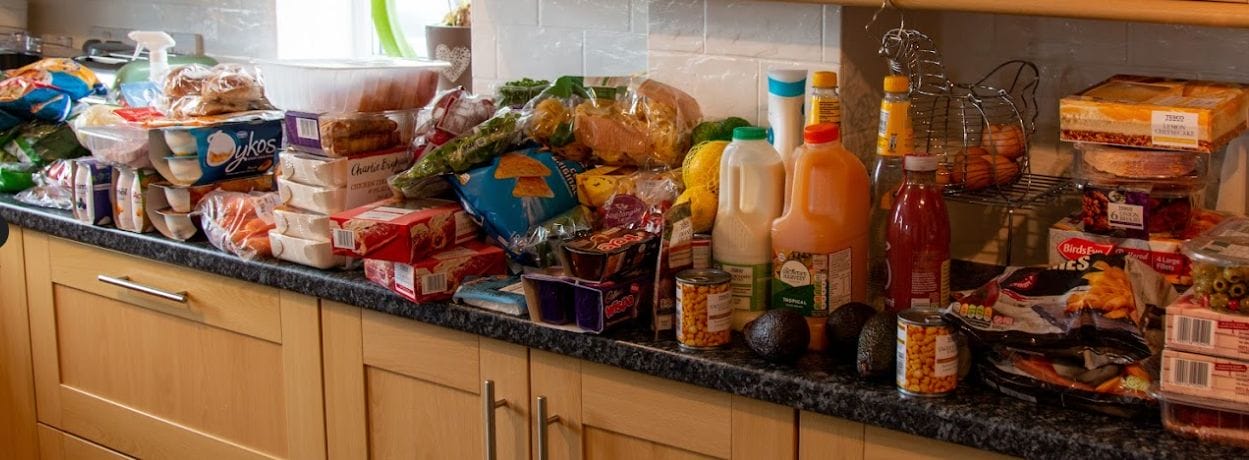 In this blog, we’ll give you the heads-up on five shortages we expect to see this year. We think some of these we’ll cover might surprise you. We also let you know the four factors you should use to evaluate any shortage, whether rumored or real. These issues may not lead to empty shelves everywhere, but it could. At the very least, it will leave many hunting for alternatives, going without, or begrudgingly paying higher and higher prices.
Inflation has hit many pretty hard at the grocery store, and it’s still hammering away at consumers. Extreme weather, wars, supply, and demand oscillations have impacted our food supply dramatically over the last few years, and this year isn’t likely to see some of these negative forces settle or decline, actually, quite the contrary. Let’s start off with discussing what’s causing this.
4 FACTORS OF A SHORTAGE
In this blog, we’ll give you the heads-up on five shortages we expect to see this year. We think some of these we’ll cover might surprise you. We also let you know the four factors you should use to evaluate any shortage, whether rumored or real. These issues may not lead to empty shelves everywhere, but it could. At the very least, it will leave many hunting for alternatives, going without, or begrudgingly paying higher and higher prices.
Inflation has hit many pretty hard at the grocery store, and it’s still hammering away at consumers. Extreme weather, wars, supply, and demand oscillations have impacted our food supply dramatically over the last few years, and this year isn’t likely to see some of these negative forces settle or decline, actually, quite the contrary. Let’s start off with discussing what’s causing this.
4 FACTORS OF A SHORTAGE
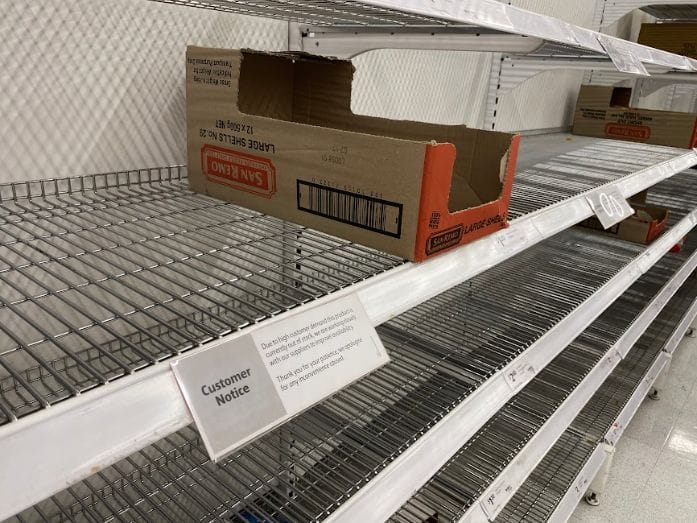 With any shortage, four factors contribute to scarcity. The first is actual supply and inventory. This is the amount of the product being produced to replenish supplies, and it is the inventory in grain bins, refrigerators, packaged in its raw forms, processed and packed, or on store shelves. The math here is simple: decreased replenishment and dwindling inventories result in high prices and product scarcity. A crop fails, and replenishment suffers. A cargo ship gets stuck in a major canal, and manufacturing and deliveries slow or stop. Avian flu, mad cow disease, or something similar, wipes out herds and flocks, and supply suffers from both dwindling inventory and reduced replenishment.
With any shortage, four factors contribute to scarcity. The first is actual supply and inventory. This is the amount of the product being produced to replenish supplies, and it is the inventory in grain bins, refrigerators, packaged in its raw forms, processed and packed, or on store shelves. The math here is simple: decreased replenishment and dwindling inventories result in high prices and product scarcity. A crop fails, and replenishment suffers. A cargo ship gets stuck in a major canal, and manufacturing and deliveries slow or stop. Avian flu, mad cow disease, or something similar, wipes out herds and flocks, and supply suffers from both dwindling inventory and reduced replenishment.
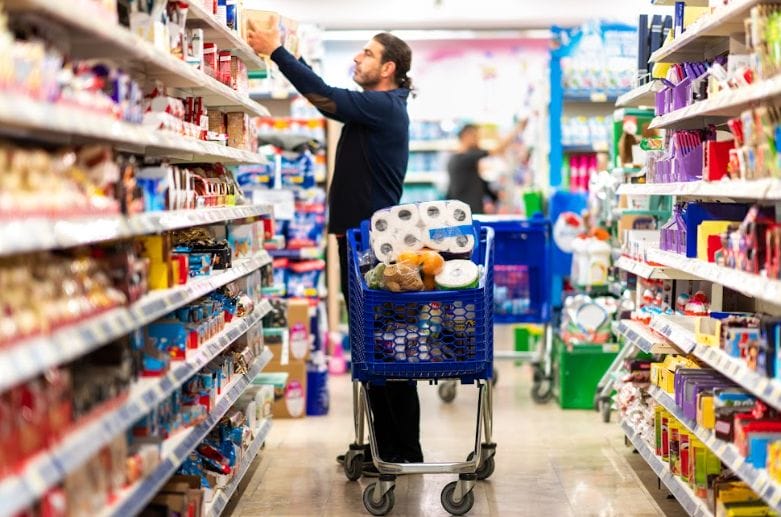 The second factor of a shortage is consumer driven. It’s rumors and panic buying. If a consumer goes to the store and sees another person buying several massive bags of rice, beans, and Ramen, he will likely believe something is going down and may stock up as well, or he may go home and search up what disaster is about to happen. There’s always a disaster about to happen somewhere on the internet or 24-hour news cycle, and that’s where much of this panic buying occurs. Someone hears that a plant that produces a formula for babies is shutting down, so they panic buy formula, maybe for their baby, maybe in the hopes of turning a profit, perhaps because it’s simply in our nature to secure our piece of something before it is gone. The math here compounds the math before. If some scarcity already was depleting inventory, panic buying and rumors completely drain inventory on shelves. That sparks surging demand, as well.
The second factor of a shortage is consumer driven. It’s rumors and panic buying. If a consumer goes to the store and sees another person buying several massive bags of rice, beans, and Ramen, he will likely believe something is going down and may stock up as well, or he may go home and search up what disaster is about to happen. There’s always a disaster about to happen somewhere on the internet or 24-hour news cycle, and that’s where much of this panic buying occurs. Someone hears that a plant that produces a formula for babies is shutting down, so they panic buy formula, maybe for their baby, maybe in the hopes of turning a profit, perhaps because it’s simply in our nature to secure our piece of something before it is gone. The math here compounds the math before. If some scarcity already was depleting inventory, panic buying and rumors completely drain inventory on shelves. That sparks surging demand, as well.
 Another factor that leads to shortages is actual inflation and production costs. Input costs and final retail prices can jump so high that inventories may be high but demand significantly contracts. As costs increase, suppliers adjust and reduce output. This swells and then shrinks inventories. When demand returns and any of the other two factors occur, the supply chain whiplashes out of its smooth operation. As input costs of feed grain soared and mega-droughts stretched well into their second decade, cattlemen sold off many of their herds while prices were still reasonable. This caused alarm in consumers, who then went out and stocked up on beef which shrank inventory, so demand went up. Inflation also caused a rise in prices at the retail level, but that money wasn’t trickling down to the producers, so many have yet to go full bore back into the production end and repopulate their large herds. That drives down supply.
Another factor that leads to shortages is actual inflation and production costs. Input costs and final retail prices can jump so high that inventories may be high but demand significantly contracts. As costs increase, suppliers adjust and reduce output. This swells and then shrinks inventories. When demand returns and any of the other two factors occur, the supply chain whiplashes out of its smooth operation. As input costs of feed grain soared and mega-droughts stretched well into their second decade, cattlemen sold off many of their herds while prices were still reasonable. This caused alarm in consumers, who then went out and stocked up on beef which shrank inventory, so demand went up. Inflation also caused a rise in prices at the retail level, but that money wasn’t trickling down to the producers, so many have yet to go full bore back into the production end and repopulate their large herds. That drives down supply.
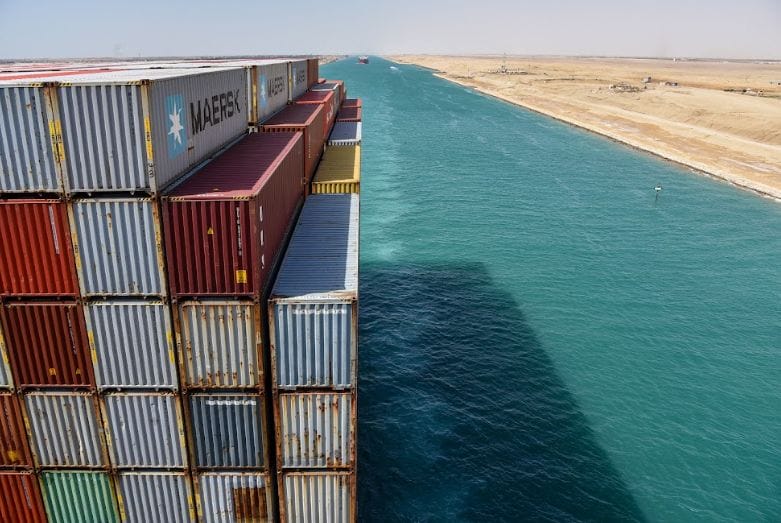 The fourth factor is imports and exports. More affluent countries can offset shortages by importing more. The country exporting may suffer from reduced supply and high prices because, though they produce more than enough supply for their people, it is being exported for higher profits overseas. Production of cereal grains from Ukraine and Russia dropped, and so to did their exports. The rest of the world then scrambles to secure import contracts from other countries. This can be seen in natural gas, grain, and fertilizer because of the Russo-Ukranian conflict. Though America produces much of what they need, demand overseas means higher profits selling it there, so inventory on our shores drops, and prices go up along with demand.
So, one or all of these four factors is at work with any shortage. Keep these factors in mind as you assess any shortage, including the ones that we’re about to discuss in this video. The key to you enduring through these challenging times ahead is being informed and prepared.
BEEF
The fourth factor is imports and exports. More affluent countries can offset shortages by importing more. The country exporting may suffer from reduced supply and high prices because, though they produce more than enough supply for their people, it is being exported for higher profits overseas. Production of cereal grains from Ukraine and Russia dropped, and so to did their exports. The rest of the world then scrambles to secure import contracts from other countries. This can be seen in natural gas, grain, and fertilizer because of the Russo-Ukranian conflict. Though America produces much of what they need, demand overseas means higher profits selling it there, so inventory on our shores drops, and prices go up along with demand.
So, one or all of these four factors is at work with any shortage. Keep these factors in mind as you assess any shortage, including the ones that we’re about to discuss in this video. The key to you enduring through these challenging times ahead is being informed and prepared.
BEEF
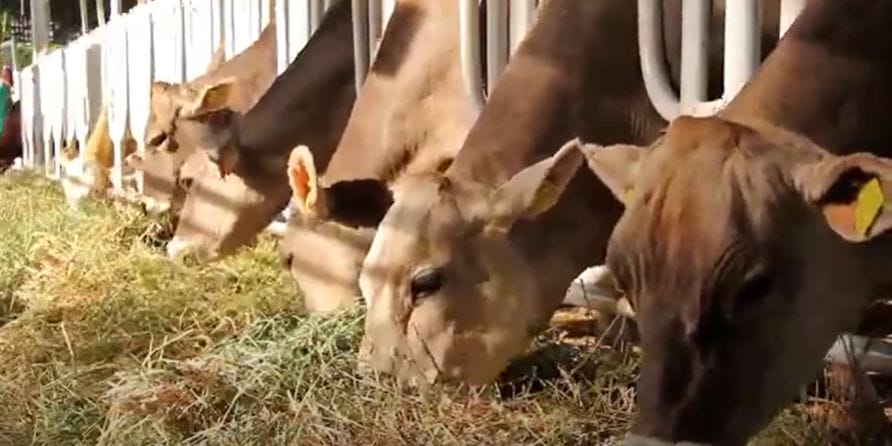 We just mentioned this one, but it’s worth mentioning again for 2023. At that time, we warned of the high prices we now see. Then we weren’t facing an outright shortage, but the signs of one in the future if things didn’t correct were undoubtedly there. Hopefully, you stocked up on steaks and hamburger then. If not, you certainly are seeing the high prices today. For 2023, we may see shortages in this industry because conditions haven’t improved. Input costs are still high, a drought still exists, and price equity has yet to trickle down to the producers from consumers, retailers, and processors. Cattle feeders are locked in a standoff with packers at the moment. There are plenty of difficulties for cattle feeders, so they have been less apt to replenish herd levels. While frozen inventory was high, it’s dwindling; and cattle producers are finding only modest profits on market-ready cattle early in the New Year. Replacement feeder cattle prices are driving projected breakevens to eight-year highs. Any of the other factors will launch this existing reduced supply into a full-blown shortage. Imports of beef may help some countries, but global politics and wars can impede that. Exports are also way up this year, so the beef raised here flows to the highest overseas bidder and not necessarily to your local grocery store.
LETTUCE
We just mentioned this one, but it’s worth mentioning again for 2023. At that time, we warned of the high prices we now see. Then we weren’t facing an outright shortage, but the signs of one in the future if things didn’t correct were undoubtedly there. Hopefully, you stocked up on steaks and hamburger then. If not, you certainly are seeing the high prices today. For 2023, we may see shortages in this industry because conditions haven’t improved. Input costs are still high, a drought still exists, and price equity has yet to trickle down to the producers from consumers, retailers, and processors. Cattle feeders are locked in a standoff with packers at the moment. There are plenty of difficulties for cattle feeders, so they have been less apt to replenish herd levels. While frozen inventory was high, it’s dwindling; and cattle producers are finding only modest profits on market-ready cattle early in the New Year. Replacement feeder cattle prices are driving projected breakevens to eight-year highs. Any of the other factors will launch this existing reduced supply into a full-blown shortage. Imports of beef may help some countries, but global politics and wars can impede that. Exports are also way up this year, so the beef raised here flows to the highest overseas bidder and not necessarily to your local grocery store.
LETTUCE
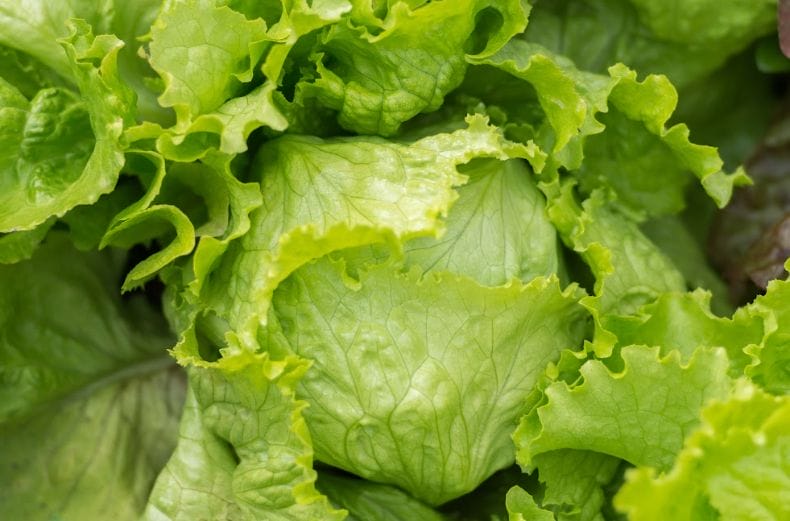 At the end of last year, the price of lettuce jumped 20% higher than the year before, and it has continued to climb steadily since then. A disease called impatiens necrotic spot virus that is spread through insects wiped out 80% of California’s Salinas Valley crop. That one area accounts for 50% of the country’s supply of lettuce. This is the problem that centralized large-scale agricultural operations pose. First, they produce monocultures or just a few cultivars of a plant. There are 140 varieties of lettuce, but you may only be familiar with romaine, bib, iceberg, leaf, and red, which are the ones commonly at your grocers. Growing such a limited variety makes the whole crop susceptible to diseases and infestations. Farmers tend to spray more harmful pesticides as a result. Lettuce is easy to grow, and we encourage you to follow along in our gardening series of videos on this channel, as this short supply will carry on into the foreseeable future.
ORANGES & CITRUS
At the end of last year, the price of lettuce jumped 20% higher than the year before, and it has continued to climb steadily since then. A disease called impatiens necrotic spot virus that is spread through insects wiped out 80% of California’s Salinas Valley crop. That one area accounts for 50% of the country’s supply of lettuce. This is the problem that centralized large-scale agricultural operations pose. First, they produce monocultures or just a few cultivars of a plant. There are 140 varieties of lettuce, but you may only be familiar with romaine, bib, iceberg, leaf, and red, which are the ones commonly at your grocers. Growing such a limited variety makes the whole crop susceptible to diseases and infestations. Farmers tend to spray more harmful pesticides as a result. Lettuce is easy to grow, and we encourage you to follow along in our gardening series of videos on this channel, as this short supply will carry on into the foreseeable future.
ORANGES & CITRUS
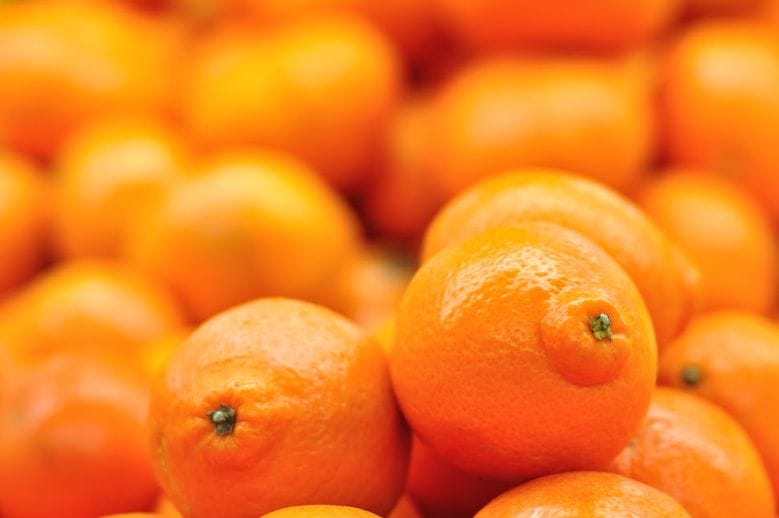 Florida growers produce several types of citrus, including oranges, grapefruit, tangerines, and tangelos. When Hurricane Ian ripped across the state in September, we warned that it could take a toll on the citrus belt that runs across the state’s center. We were waiting for the reports and numbers to come in, and they arrived. The Sunshine State’s orange production is expected to drop 51% in this year’s growing season. Levels that low haven’t been seen since the 1930s– nearly a century ago. Citrus growers are also fighting the disease “citrus greening,” also spread by bacterium-infected insects. Infected trees produce green, bitter, and misshapen fruits, so they never make it to your grocery store or to juicers. Once a tree is infected, there is no cure. Over time the tree will deteriorate, and the disease will destroy the tree. It has to be removed from the grove. Don’t expect California and Arizona to make up for the shortfall. Citrus groves take time, and the drought will deter would-be citrus growers.
CEREAL & FEED GRAINS
Florida growers produce several types of citrus, including oranges, grapefruit, tangerines, and tangelos. When Hurricane Ian ripped across the state in September, we warned that it could take a toll on the citrus belt that runs across the state’s center. We were waiting for the reports and numbers to come in, and they arrived. The Sunshine State’s orange production is expected to drop 51% in this year’s growing season. Levels that low haven’t been seen since the 1930s– nearly a century ago. Citrus growers are also fighting the disease “citrus greening,” also spread by bacterium-infected insects. Infected trees produce green, bitter, and misshapen fruits, so they never make it to your grocery store or to juicers. Once a tree is infected, there is no cure. Over time the tree will deteriorate, and the disease will destroy the tree. It has to be removed from the grove. Don’t expect California and Arizona to make up for the shortfall. Citrus groves take time, and the drought will deter would-be citrus growers.
CEREAL & FEED GRAINS
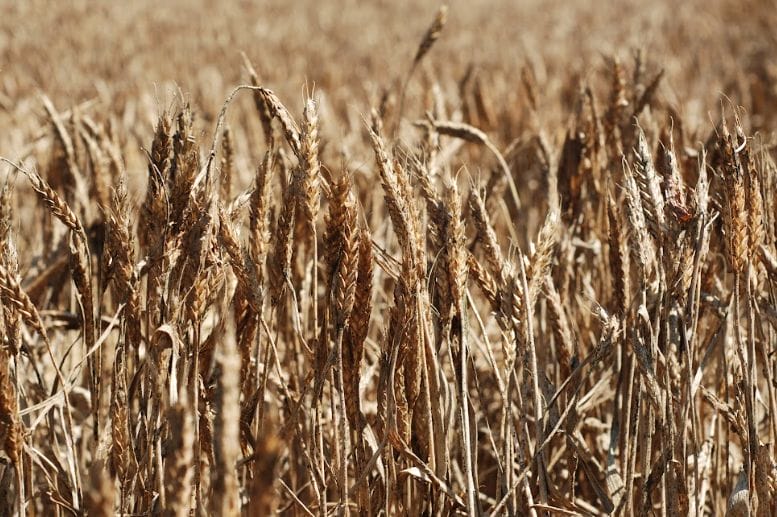 It’s easier to list out the problems here. Ukraine and Russia supply 30% of the world’s wheat, 20% of the world’s corn, and 60% of the world’s sunflower seeds and oil. Soaring fertilizer crops have already raised prices. The weather has significantly reduced harvests in parts of the world, like the United States. For corn, sorghum, soybeans, wheat, and other major cereal grains, supply in the US is down, and the price is up. While this has caused exports to decrease, the reduced supply is also being further complicated by the exportation to countries to fill in the gaps caused by the Russo-Ukranian war. Cereal grain shortages are one weather, disease, or infestation event away from a major collapse. You might have already noticed this if you tried to buy a loaf of bread recently. Corn alone makes up 95% of all US feed grain. These grains are in so many grocery store foods that the absence of one can quickly empty shelves across America.
CANNED ANYTHING
It’s easier to list out the problems here. Ukraine and Russia supply 30% of the world’s wheat, 20% of the world’s corn, and 60% of the world’s sunflower seeds and oil. Soaring fertilizer crops have already raised prices. The weather has significantly reduced harvests in parts of the world, like the United States. For corn, sorghum, soybeans, wheat, and other major cereal grains, supply in the US is down, and the price is up. While this has caused exports to decrease, the reduced supply is also being further complicated by the exportation to countries to fill in the gaps caused by the Russo-Ukranian war. Cereal grain shortages are one weather, disease, or infestation event away from a major collapse. You might have already noticed this if you tried to buy a loaf of bread recently. Corn alone makes up 95% of all US feed grain. These grains are in so many grocery store foods that the absence of one can quickly empty shelves across America.
CANNED ANYTHING
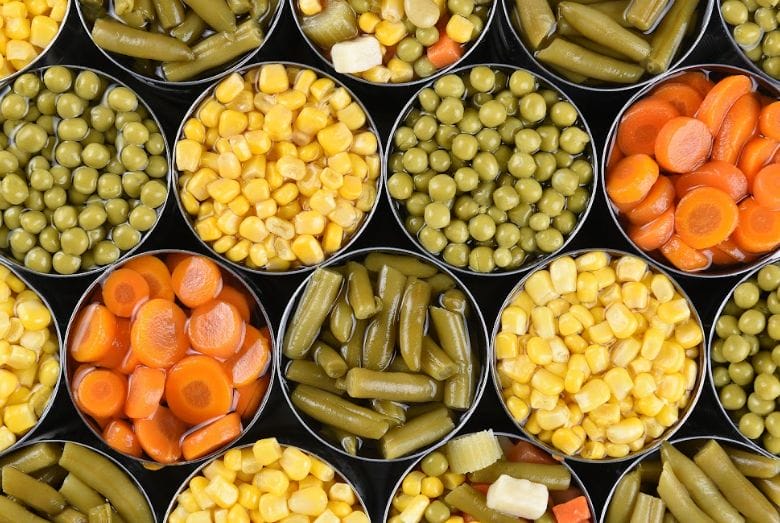 When more people were at home during the pandemic, there was an increase in people stocking up on canned foods and beverages. This caused a rise in demand for aluminum that outstripped supplies. We are still feeling that ripple. This wasn’t just in the US, but the shortage was experienced worldwide. The top 3 aluminum-producing countries are China, India, and Russia, and some relations are strained there, to say the least. Aluminum production has declined over the years, so they were not ready for a surge in demand. This may take some time to work itself out, but you can expect odd shortages of canned products even as supplies of the food inside remain in good supply. Everything from soups to vegetables to pet food, soda, and beer can be affected. Also, expect food producers to make changes in their packaging if the aluminum supply is further threatened and as other people come to prepping and buy up shelved inventories.
COFFEE
When more people were at home during the pandemic, there was an increase in people stocking up on canned foods and beverages. This caused a rise in demand for aluminum that outstripped supplies. We are still feeling that ripple. This wasn’t just in the US, but the shortage was experienced worldwide. The top 3 aluminum-producing countries are China, India, and Russia, and some relations are strained there, to say the least. Aluminum production has declined over the years, so they were not ready for a surge in demand. This may take some time to work itself out, but you can expect odd shortages of canned products even as supplies of the food inside remain in good supply. Everything from soups to vegetables to pet food, soda, and beer can be affected. Also, expect food producers to make changes in their packaging if the aluminum supply is further threatened and as other people come to prepping and buy up shelved inventories.
COFFEE
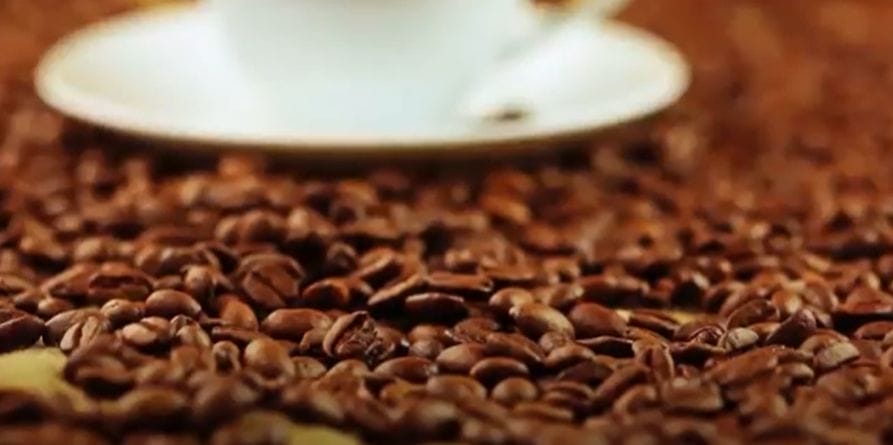 There’s a potential supply problem brewing in the world coffee industry. Supplies are low and inclement weather is impacting harvests in Columbia, Vietnam, Guatemala, Honduras, and Nicaragua. Political strife may affect Brazil soon. Brazilian suppliers are holding on to their supplies to drive up prices. Many have long feared this day, and you may already be seeing price increases in what is a favorite beverage for three-quarters of Americans, with 53% having at least one cup per day. At the same time, demand is astronomically increasing. The global coffee beans market climbed to $28.9 billion in 2021 and is forecasted to reach a market value of a whopping $42.26 billion by 2027. I have long believed this industry was one disease or blight away from collapse, and we may be there. While you don’t need coffee to survive, though some might argue against that statement, other alternative beverages and flavorings are available. Still, it is worthy of the list as a possible compounded shortage looms closer on the horizon.
There are other shortages and possible shortages we could have included in this blog, like tomatoes, champagne, rice, butter, chicken, pork, and eggs; however, I have other videos on some of those and others many people wouldn’t notice in their everyday life.
Some of those shortages will work out this year as rain falls, producers ramp up production, or imports fulfill demand. We focused here on shortages and reduced supplies of goods you will likely have in your daily diet or prepping supplies. Your area may not experience an outright shortage, but you will definitely feel the price increases at checkout. Some countries are better positioned to deal with these shortages than others. The US is a very self-reliant country when it comes to food. Most of the core foods are produced in the country, and only about 15% of the country’s overall food supply is imported from abroad. Resources being exported to other higher-paying countries could be a problem for some commodities, but overall the US is well situated to endure significant shortages.
You may not have empty shelves at your grocery store of any of these items, but you will have a lighter wallet and experience shrinkflation in the packaging. Most importantly, you should understand the four factors that result in or compound a shortage. That will help you assess what may be in short supply in the future and allow you to stock up ahead of the masses. Do you see a shortage in 2023 we should cover in the future? If so, let us know about it and we may consider it for a future blog. We always glean critical insight and a heads-up from readers like you.
As always, stay safe out there.
There’s a potential supply problem brewing in the world coffee industry. Supplies are low and inclement weather is impacting harvests in Columbia, Vietnam, Guatemala, Honduras, and Nicaragua. Political strife may affect Brazil soon. Brazilian suppliers are holding on to their supplies to drive up prices. Many have long feared this day, and you may already be seeing price increases in what is a favorite beverage for three-quarters of Americans, with 53% having at least one cup per day. At the same time, demand is astronomically increasing. The global coffee beans market climbed to $28.9 billion in 2021 and is forecasted to reach a market value of a whopping $42.26 billion by 2027. I have long believed this industry was one disease or blight away from collapse, and we may be there. While you don’t need coffee to survive, though some might argue against that statement, other alternative beverages and flavorings are available. Still, it is worthy of the list as a possible compounded shortage looms closer on the horizon.
There are other shortages and possible shortages we could have included in this blog, like tomatoes, champagne, rice, butter, chicken, pork, and eggs; however, I have other videos on some of those and others many people wouldn’t notice in their everyday life.
Some of those shortages will work out this year as rain falls, producers ramp up production, or imports fulfill demand. We focused here on shortages and reduced supplies of goods you will likely have in your daily diet or prepping supplies. Your area may not experience an outright shortage, but you will definitely feel the price increases at checkout. Some countries are better positioned to deal with these shortages than others. The US is a very self-reliant country when it comes to food. Most of the core foods are produced in the country, and only about 15% of the country’s overall food supply is imported from abroad. Resources being exported to other higher-paying countries could be a problem for some commodities, but overall the US is well situated to endure significant shortages.
You may not have empty shelves at your grocery store of any of these items, but you will have a lighter wallet and experience shrinkflation in the packaging. Most importantly, you should understand the four factors that result in or compound a shortage. That will help you assess what may be in short supply in the future and allow you to stock up ahead of the masses. Do you see a shortage in 2023 we should cover in the future? If so, let us know about it and we may consider it for a future blog. We always glean critical insight and a heads-up from readers like you.
As always, stay safe out there. 
